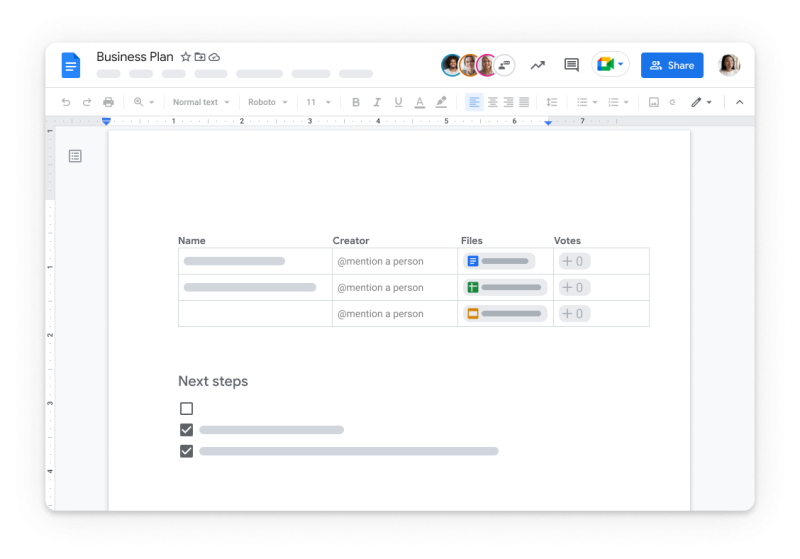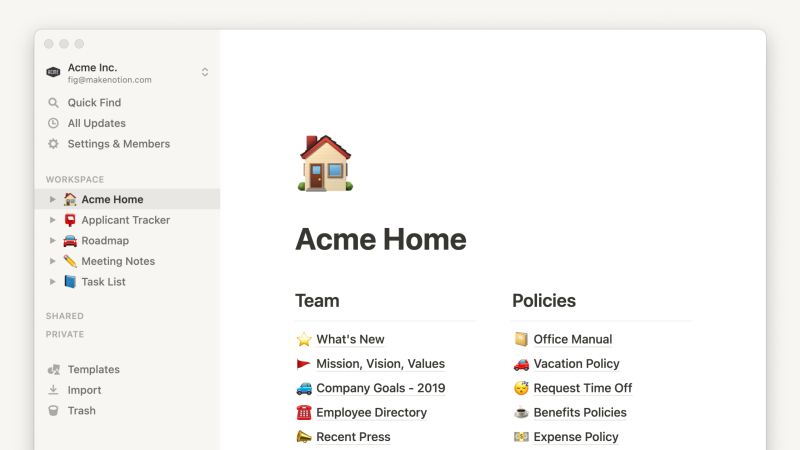Product documentation – table of contents:
What is product documentation?
Product documentation is a collection of text, visuals, and videos describing the product, its functions, the way it should be used, and other relevant details. The primary purpose of creating documentation is to help users understand how to use the product, and especially its advanced features.
Documentation is important, especially if you are creating a digital product that will not only serve end users but also integrate with other products – for example, allowing you to export data to another application, or use a localization or contact database.
For example, documentation for a project management tool might include information on how to create a new project, how to add team members to a project and give them permission to change only certain tasks, how to assign tasks to multiple people simultaneously, and how to track their progress.
Elements of product documentation
Product documentation may include:
- User’s manual – a document that provides information on product features, installation, settings, and troubleshooting.
- User’s guide – a document that explains how to perform various tasks with the product, such as how to use a photo editing program or how to play a computer game.
- Knowledge base – a collection of articles or web pages that answer frequently asked questions or provide additional information about a product. An example would be the “Help Center” or “Support” section on the website. It is also often used as a source of information for a chatbot that assists customers.
- FAQ – a list of frequently asked questions and answers about the product. For example, a website or PDF file that includes answers to questions such as: “How do I reset my password?”, “How do I contact customer support?” or “What are the system requirements for the product?”.
- Tutorials – videos, usually posted on the company’s website or YouTube, that demonstrate how to use the product or perform certain tasks.
- Diagrams and infographics – graphical representations of the structure, function, or process of a product. For example, a diagram showing what options to select when configuring an API.
How to create product documentation?
Understanding target audience
The first step in creating product documentation is to understand the audience to whom this particular document will be directed. Answer the following questions:
- Who will be using this document? – Will it be a first-time user or a more advanced user?
- At what point will the user reach for this document? Are they looking for general or extra information about the tool’s capabilities, or a solution to a specific problem?
- What device will they be using it on? If it’s a mobile device, are videos clear enough?
- What are their needs and expectations? Will the user prefer to watch a dynamic video or look at a diagram?
Once you understand your audience and their needs, you can start creating your documentation. For example, if your target group is novice users, the documentation should be accessible every step of the way, written in simple, easy-to-understand language, and include detailed instructions.
Remember that well-organized documentation not only helps users understand the product but also saves time they might have spent searching for answers to their questions. This reduces churn, that is, the percentage rate at which customers stop subscribing to a service.
Clear communication
Creating effective product documentation is not only about choosing the right form of communication (e.g., videos, visuals, knowledgebase), but also about writing and communicating clearly and concisely. The basic principles of effective communication in product documentation are as follows:
- Use plain language – avoid technical language and complicated terms. For example, instead of saying “initiate a project,” you can say “start a project.”
- Be specific – provide examples to help users understand how to use the product. For instance, instead of saying “allows you to add team members to a project,” say “add a team member to a project by clicking on the green button at the bottom of the project management page” and add a screenshot with a visual clue.
- Avoid passive voice – active voice is easier to understand and read. For example, instead of saying “the project can be started by the manager,” say “the manager can start the project.”
There are many other principles to follow, but the most important is to remember that effective product documentation should be understandable to users and help them use the product effectively.
Using visuals in product documentation
Visuals, such as images, gifs, short videos, diagrams, and infographics, can greatly improve understanding of product documentation. For example, a screenshot showing where the “Add Team Member” button is located on the page can be very helpful for first-time users. When creating documentation, also use clear headings and a simple font to organize the text.
Updating and maintaining product documentation
Product documentation is not a static document. It must be updated on a regular basis to reflect changes in the product. Regular updates are crucial for the documentation to serve its purpose. For example, if you are introducing a new feature to your product management software, you should update its product documentation to address it.
Publishing and distributing product documentation
Publishing and distributing product documentation is just as important as creating it. You need to make sure that your documentation is easily accessible to users, no matter where they are or what device they are using. For example, you can upload your product documentation to your website, or send it directly to users via email.
Top document management systems for product managers
Product managers have many tools at their disposal that can help them create and manage product documentation. Popular solutions include:
- Google Docs is a cloud-based service for creating and editing documents. It is a popular tool for product managers because you can access it on any device and it can be used by multiple team members.
- Firmbee is a comprehensive project and team management tool that allows users to complete tasks from anywhere in the world in real-time. Product managers can easily organize their work and that of their colleagues, track progress, control budgets, and conduct recruitment processes.
- Notion is a task and project management application that can be used to track tasks, notes, and files. Notion is a popular option for product managers because it is flexible and can be customized.
- Zendesk Guide is a customer service solution that can be used to create and share knowledge base articles. Zendesk Guide is a popular choice for product managers as it allows them to provide support and help customers solve their problems.




Summary
Creating and managing product documentation is an often underestimated task. Many digital product developers believe that a well-designed product is self-explanatory. However, product documentation should be more than just a user’s guide.
It should also be a tool that can help increase customers’ awareness of the product and analyze their interest in new features, as well as the number of views of particular articles or explanations. Such analysis helps companies better manage their products and improve user experience. So it’s worth the time and effort to create effective product documentation that can serve both you and your users.
If you like our content, join our busy bees community on Facebook, Twitter, LinkedIn, Instagram, YouTube, Pinterest, TikTok.
Author: Andy Nichols
A problem solver with 5 different degrees and endless reserves of motivation. This makes him a perfect Business Owner & Manager. When searching for employees and partners, openness and curiosity of the world are qualities he values the most.
Product management:
- Intro to product management
- What is the role of a product manager?
- Why is product lifecycle management important?
- How to build an efficient product strategy?
- OKRs vs SMART goals. Which framework drives better results?
- How to define a value proposition?
- Identifying customer needs and market segmentation
- Crafting a winning product concept. Techniques and steps
- Gaining an edge with an effective product roadmap
- Prototyping your digital product
- How to build an MVP?
- MVP vs MMP vs MMF. Key milestones in product development
- Mastering hypothesis testing
- Proven methods for improving product quality management
- Strategies and tactics for a successful product launch
- Driving profitability through product optimization
- Measuring product success
- How to price a product? The most popular pricing strategies
- The future of product design. Top trends and predictions
- When to retire a product? Key factors influencing EOL decisions
- Agile in product management
- Scrum and Kanban in product management.
- What is lean product management?
- Jobs to be Done. Creating products that customers truly need
- What is growth hacking?
- What is data-driven product management?
- A/B testing in product management
- Useful product management templates. Where to find them?
- Strategyzer tools in product management
- 5 useful product management tools
- How to create and manage product documentation?
- 6 essential tools for product managers
- How to use AI in product management


















